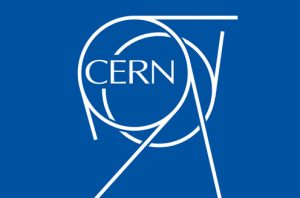One of the First Web Server


Date: 01/01/1972
A web server is a computer system that processes requests via HTTP, the basic network protocol used to distribute information on the World Wide Web. The term can refer to the entire system, or specifically to the software that accepts and supervises the HTTP requests.
The world’s first web server, later known as CERN httpd, which ran on NeXTSTEP
CERN httpd (later also known as W3C httpd) was a web server (HTTP) daemon originally developed at CERN from 1990 onwards by Tim Berners-Lee, Ari Luotonen and Henrik Frystyk Nielsen. Implemented in C, it was the first ever web server software. CERN httpd was originally developed on a NeXT Computer running NeXTSTEP, and was later ported to other Unix-like operating systems, OpenVMS and systems with unix emulation layers, e.g. OS/2 with emx+gcc. It could also be configured as a web proxy server. Version 0.1 was released in June 1991. In August 1991, Berners-Lee announced in the Usenet newsgroup alt.hypertext the availability of the source code of the server daemon and other World Wide Web software from the CERN FTP site.
The original, first generation HTTP server which some call the Volkswagen of the Web.
The server was presented on the Hypertext 91 conference in San Antonio and was part of the CERN Program Library (CERNLIB). Later versions of the server are based on the libwww library. The development of CERN httpd was later taken over by W3C, with the last release being version 3.0A of 15 July 1996. From 1996 onwards, W3C focused on the development of the Java-based Jigsaw server.
The initial version was public domain software; the last one was under an MIT license.
Overview – Web Server
The primary function of a web server is to store, process and deliver web pages to clients. The communication between client and server takes place using the Hypertext Transfer Protocol (HTTP). Pages delivered are most frequently HTML documents, which may include images, style sheets and scripts in addition to text content. A user agent, commonly a web browser or web crawler, initiates communication by making a request for a specific resource using HTTP and the server responds with the content of that resource or an error message if unable to do so. The resource is typically a real file on the server’s secondary storage, but this is not necessarily the case and depends on how the web server is implemented. While the primary function is to serve content, a full implementation of HTTP also includes ways of receiving content from clients. This feature is used for submitting web forms, including uploading of files. Many generic web servers also support server-side scripting using Active Server Pages (ASP), PHP, or other scripting languages. This means that the behaviour of the web server can be scripted in separate files, while the actual server software remains unchanged. Usually, this function is used to generate HTML documents dynamically (“on-the-fly”) as opposed to returning static documents. The former is primarily used for retrieving and/or modifying information from databases. The latter is typically much faster and more easily cached but cannot deliver dynamic content.
Web servers are not only used for serving the World Wide Web. They can also be found embedded in devices such as printers, routers, webcams and serving only a local network. The web server may then be used as a part of a system for monitoring and/or administering the device in question. This usually means that no additional software has to be installed on the client computer, since only a web browser is required (which now is included with most operating systems).
Path translation
Web servers are able to map the path component of a Uniform Resource Locator (URL) into:
A local file system resource (for static requests)
An internal or external program name (for dynamic requests)
For a static request the URL path specified by the client is relative to the web server’s root directory.
Consider the following URL as it would be requested by a client:
http://www.example.com/path/file.html
The client’s user agent will translate it into a connection to www.example.com with the following HTTP 1.1 request:
GET /path/file.html HTTP/1.1
Host: www.example.com
The web server on www.example.com will append the given path to the path of its root directory. On an Apache server, this is commonly /home/www (On Unix machines, usually /var/www). The result is the local file system resource:
/home/www/path/file.html
The web server then reads the file, if it exists, and sends a response to the client’s web browser. The response will describe the content of the file and contain the file itself or an error message will return saying that the file does not exist or is unavailable.